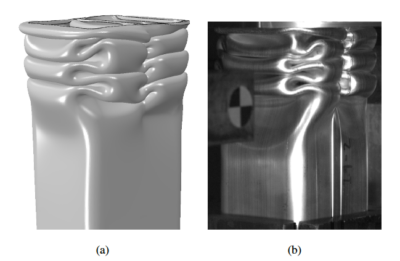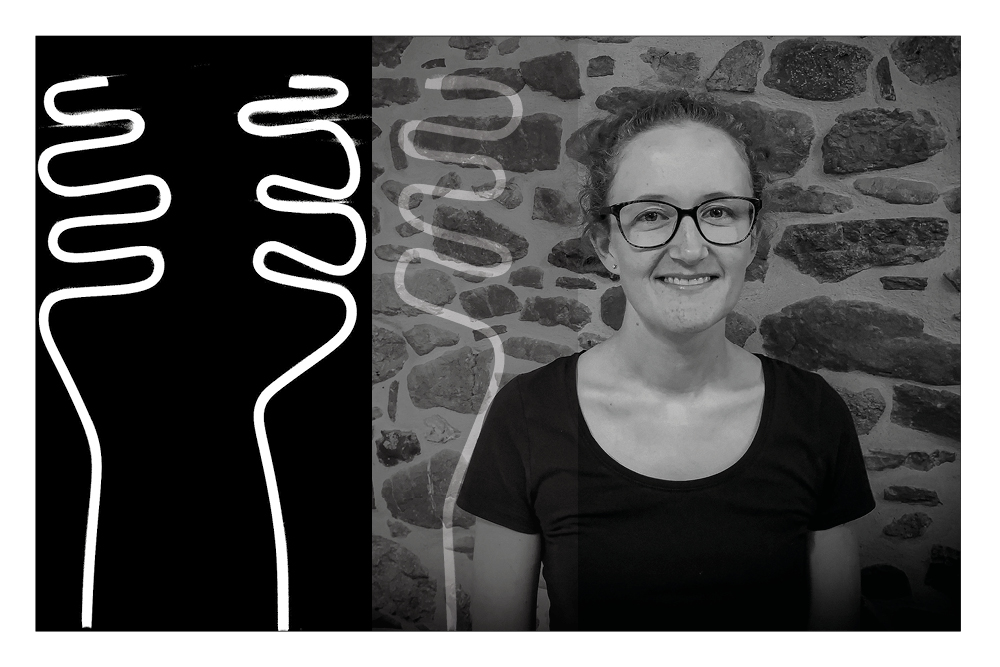Kristin Qvale is an expert in energy absorption and fractures in aluminium components, such as the crash boxes in cars. The key to knowledge lies in the microstructures. Any change here affects the whole component’s behaviour.
«The essence of my work is to perform various studies on ductile fracture in 6000-series aluminium alloys. I look at how certain changes in the microstructure affect the fracture behaviour at higher scales and how fracture affects the crash behaviour of aluminium components», says Kristin Qvale.
Virtual design and tailormade alloys
She is the 4th of 5 PhD candidates to defend her thesis within the framework of the Toppforsk project FractAl. It is a concurrent project to SFI CASA, led by Professor Odd Sture Hopperstad. Its full name is «Microstructure-based Modelling of Ductile Fracture in Aluminium Alloys». The prime objective is to develop and validate a multi-scale framework for modelling plastic deformation and ductile fracture of age-hardening aluminium alloys.
The 5-year project was completed in May 2022. It opens completely new possibilities in the design and use of aluminium.
«By introducing such a modelling procedure, we can -potentially- develop crash components almost completely virtually. One may tailor an alloy to optimise a component’s behaviour to failure», Kristin Qvale says.
Reduce the need for expensive physical tests

Even though Fractal focuses on modelling 6000-series (Al-Mg-Si) aluminium alloys, parts of the modelling framework can also be used for other structural metals. The goal is to reduce the need for expensive physical tests by partially replacing them with numerical simulations.
«My research is most relevant for those who develop alloys for specific purposes. Simulating crushing profiles could be relevant for the automotive industry in a quest to reduce physical testing. The image shows a deformed crash box and its simulation counterpart.
Bridging the gap
Her doctoral work spans from the nanoscale to full-size components. She has entitled it «Energy absorption and failure in aluminium alloys: An experimental and numerical study». If you imagine the FractAl framework as a somewhat intricate puzzle, her work will consist of pieces that fit in several places.
«My project is not the most complete in itself», she says.
«But it follows the work of others, while others can use parts of my work. I emphasise the macroscopic scales, with fracture included. Thus, I help build a bridge between the microstructure and the component behaviour.
Kristin Qvale now lives in Italy. Her supervisors are Professor Tore Børvik (main) and Odd Sture Hopperstad at the Department of Structural Engineering. Qvale defends her thesis online on 28 June 2022.
Kristin Qvale´s X-ray CT scan of a crushed double-chamber aluminium crash box in the photomontage created some excitement in FractAl and CASA. It resembled the famous, ghost-like Hattifatteners from the Moomin valley books. Besides, Qvale’s simulations captured the folding patterns of a quasi-static crushing of an AA6063 aluminium alloy with high accuracy.

